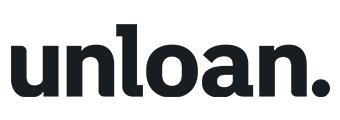With interest rates shifting and property prices at record highs, it's worth knowing how you might boost your borrowing capacity. After all, in many cases, the more you can borrow, the broader your property search can be.
Even a small lift in borrowing power could be the difference between a home with an extra bedroom, a standalone house instead of a unit, or an apartment in a more convenient neighbourhood.
Whether you're buying your first home or upgrading to a larger space, it pays to get your financial health in order before you start scrolling through listings - your finances often set the limit on how much you can borrow.
Here are some ways to maximise your borrowing power without stretching your day-to-day budget:
Look over your credit limits
Holding one or more credit cards might put you at a disadvantage when applying for a home loan. Lenders often treat an applicant's credit card limit as debt they already hold and service, since it could be drawn down at any time.
For example, if you have a $15,000 credit limit, a lender may assess you as having $15,000 of consumer debt - even if you rarely use the card. As a result, your borrowing capacity might be reduced by that amount or more.
Closing an unused card could save you annual fees, help you avoid high-interest debt, and potentially allow you to borrow more towards your home.
See also: How your credit cards could impact your home loan
Review and polish your credit rating
Another effective way to boost your borrowing capacity is to maintain a clean credit history - or work on improving it if yours needs attention.
Paying all existing loan repayments and household bills on time, even the small and infrequent ones, signals to lenders that you're a reliable borrower. This can improve your chances of home loan approval and, in some cases, increase how much you're able to borrow.
It's also worth requesting a copy of your credit report from an official provider. Reviewing it will help you spot and address any errors or unresolved issues that could hold back your application.
Pay off your existing debts or consolidate them into a single loan
Multiple debts on your file can make lenders cautious. If possible, consider paying them down or consolidating them into a single loan. This can simplify your repayments, make budgeting easier, and potentially improve your borrowing capacity.
Rolling smaller debts into one loan - ideally at a lower interest rate - could save you money over the life of the loan. Refinancing to bring all your loans under a better rate can also reduce the total interest you pay.
However, debt consolidation isn't always the best option for everyone. Before making the move, consider speaking with a trusted broker or financial adviser to calculate how much you'll actually save.
Analyse your income and expenses
It's important to have a clear picture of your living expenses before you apply for a loan - lenders will ask for these and consider them when determining how much they're willing to lend.
Children's school fees, repayments for an investment property mortgage (lenders often consider how you'd meet these costs in a worst-case scenario in which the property remains vacant for some time), and even expensive gym memberships can all be factored in when calculating how much you can afford to borrow.
It's might be worth checking your borrowing capacity based on your current expenses and starting your property search accordingly.
And beware, many lenders compare your declared expenses against a tool called the Household Expenditure Measure (HEM). If you fudge the numbers, you might be asked to provide proof your outgoings are what you say they are.
You can estimate how your expenses might affect your capacity using our Borrowing Power Calculator.
For this reason, it's important to keep your financial records up to date - and don't just rely on last month's payslip. Supplementing your application with proof of regular bonuses, overtime, rental income, or other investment earnings can make a big difference to how a lender assesses your financial position.
Submitting organised, complete paperwork can also save time and reduce unnecessary back-and-forth with the bank.
Consider creative purchasing tactics, joint applications, or a guarantor
The way you structure your purchase can have a big impact on how much you're able to borrow. If you're buying an investment property, lenders will often count a portion of the expected rental income towards your earnings, which can increase your assessed repayment capacity. That's why some homebuyers may consider rentvesting (buying an investment property while renting where they live) or 'nestvesting' (purchasing an investment property while living with family). Renting out a spare room or part of a property can also provide extra income that some lenders may take into account when assessing your application.
Another option is to apply for a loan jointly with a partner, friend, or family member. Pooling incomes can boost borrowing capacity - though it also means sharing both ownership and responsibility for repayments.
You could also apply with a guarantor, typically a parent or close relative, who offers a property or asset as extra security. This can reduce the perceived risk for the lender, potentially allowing you to borrow more or avoid Lenders Mortgage Insurance (LMI). Though, acting as a guarantor is a significant commitment and can come with risks.
Beef up your deposit or income
The bigger your deposit, the less you need to borrow to buy a property. If your borrowing power falls short, you could double down on saving or, if possible, ask a parent or family member for help – perhaps via an early inheritance (not an option available to everyone, of course).
Remember, though, that most lenders want to see genuine savings built up over at least three months, so a last-minute cash gift mightn't do much to increase your borrowing capacity.
A solid deposit can also help you avoid LMI, potentially freeing up thousands of dollars you could put towards your property purchase.
On top of that, you should check whether you qualify for a First Home Owners Grant or other government incentives in your state or territory, as these can quickly boost your deposit. Stamp duty concessions for first home buyers can also reduce the upfront cost of buying.
If you still need to lift your borrowing capacity, another option is increasing your income – whether that’s by going for a higher-paying role, taking on a side gig, or negotiating a pay rise. These options may sound daunting, but they can have a meaningful impact on how much a lender will let you borrow.
Find a lower interest rate or reconsider your lender
A lower interest rate means lower repayments – which can directly increase your borrowing capacity. Lenders assess how much you're able to borrow based on how much you're able to repay each month (ergo, how of your income is left after meeting all your existing commitments). For that reason, shaving even a small amount off your home loan rate could make a noticeable difference, as it can reduce the size of your repayments.
But many lenders will apply a serviceability buffer when assessing your financial capacity to repay a loan, effectively ensuring you could meet your repayments if your interest rate were to rise.
Most banks must apply a serviceability buffer of at least 3% above a home loan’s interest rate, as per Australian Prudential Regulation Authority (APRA) guidelines.
However, non-bank lenders aren’t bound by APRA’s rules – meaning some may use a smaller buffer or none at all. A smaller serviceability buffer can increase your assessed borrowing capacity. If you’re unsure, a mortgage broker can help identify lenders with assessment criteria suitable to your needs.
What factors impact your borrowing power?
While no one can be 100% certain what each lender prioritises in a home loan application, most will assess similar key elements when deciding how much you can borrow.
Here are seven factors that can influence your borrowing power:
-
Your combined income and financial commitments
Lenders look at your income, ability to meet repayments, and employment stability. Self-employed applicants may face extra scrutiny, while those with a steady work history are often viewed more favourably. Your existing debts – such as car loans, credit cards, or personal loans – also count, as these commitments reduce the funds available to service a mortgage. -
Your living expenses
Day-to-day costs play a big role in borrowing capacity. Lenders want to ensure you can comfortably cover mortgage repayments without compromising your lifestyle, so they’ll assess your typical spending across categories like groceries, utilities, and leisure. -
The size of your deposit
A larger deposit means borrowing less, and it also demonstrates an ability to save – something lenders tend to reward. It may also help you avoid LMI. -
Your credit history
Your track record with loans and credit is crucial. Lenders check for any defaults, late payments, or other red flags. A clean credit report can boost your borrowing capacity. -
Home loan type, term, and interest rate
Lower interest rates and longer loan terms generally mean lower repayments, which can increase borrowing power. However, lenders also apply a serviceability buffer – typically adding a 3% buffer to the interest rate – to ensure you can still repay your loan if your rate rises. Some non-bank lenders use smaller buffers, potentially increasing borrowing capacity. -
Value of the property
Lenders conduct a valuation to confirm the property’s worth. This ensures the home provides sufficient security for the loan. While grim, this is important in the event they need to repossess the property to recover a debt.
Considering applying for a home loan? Here are some of the best mortgage options on the market right now:
| Lender | Home Loan | Interest Rate | Comparison Rate* | Monthly Repayment | Repayment type | Rate Type | Offset | Redraw | Ongoing Fees | Upfront Fees | Max LVR | Lump Sum Repayment | Extra Repayments | Split Loan Option | Tags | Features | Link | Compare | Promoted Product | Disclosure |
|---|---|---|---|---|---|---|---|---|---|---|---|---|---|---|---|---|---|---|---|---|
5.29% p.a. | 5.33% p.a. | $2,773 | Principal & Interest | Variable | $0 | $530 | 90% |
| Promoted | Disclosure | ||||||||||
5.19% p.a. | 5.10% p.a. | $2,742 | Principal & Interest | Variable | $0 | $0 | 80% |
| Disclosure | |||||||||||
5.39% p.a. | 5.43% p.a. | $2,805 | Principal & Interest | Variable | $0 | $530 | 90% |
| Promoted | Disclosure |
Image by Cam Adams on Unsplash
Collections: Borrowing Power First Home Buyer






Share